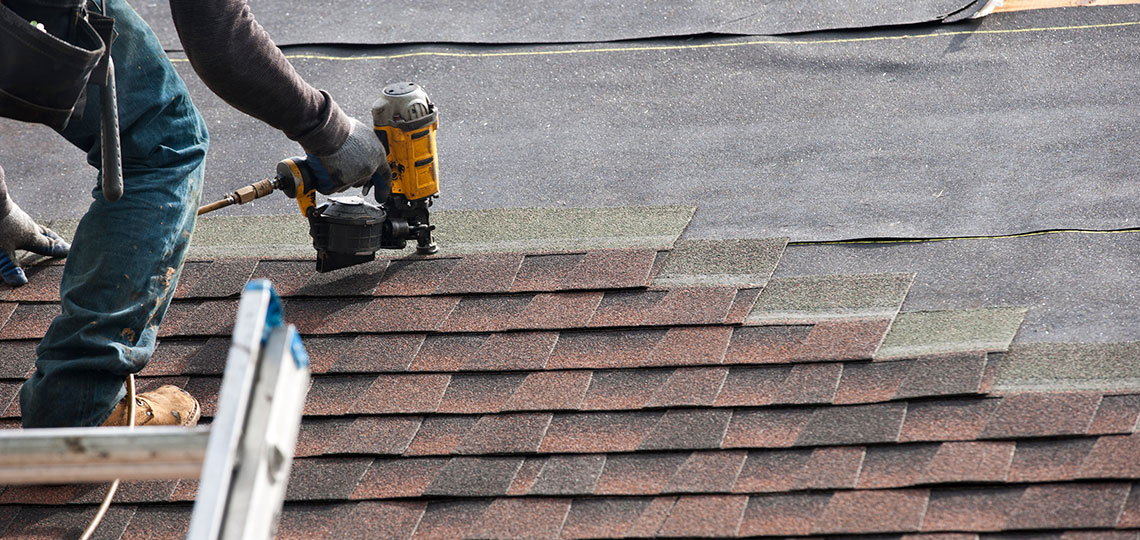Best Practices for Ensuring Appropriate Roof Covering Air Flow
Ensuring proper roof ventilation is vital for the longevity and performance of a roof. A well balanced intake and exhaust vent proportion, generally 1:300, plays a crucial duty, with intake vents ideally positioned at the lower side of the roof for awesome air entrance and exhaust vents at the peak for warm air leave. Regular examinations to recognize blockages and maintain clear airflow are paramount. Maintaining insulation away from vents is important to protect against air flow limitation. Understanding these foundational elements sets the phase for more comprehensive understandings right into installment and maintenance techniques that can substantially enhance your roof's performance.
Understand Air Flow Fundamentals
Effectively understanding ventilation basics is important for guaranteeing the long life and effectiveness of roof covering systems. Reliable ventilation reduces dampness accumulation and temperature extremes in the attic, both of which can cause considerable structural damage over time. A well-ventilated roofing system assists in preventing common concerns such as mold growth, wood rot, and ice dams, which can jeopardize the integrity of the roof covering products and the underlying structures.
The main goal of ventilation is to promote the activity of air, permitting a constant exchange in between the interior and outdoor settings. This balance is accomplished through a mix of consumption and exhaust vents that collaborate to keep optimum airflow. Consumption vents, commonly located along the soffits or eaves, permit fresh air to get in the attic area, while exhaust vents, typically situated at or near the roof ridge, make it possible for hot, humid air to escape.
Key factors influencing the performance of roofing air flow consist of proper placement, appropriate sizing, and making sure that both consumption and exhaust vents are unblocked. Regular inspection and maintenance are crucial to identify possible clogs, damage, or inefficiencies in the air flow system, consequently securing the roof's performance and toughness.
Sorts Of Roofing Vents
Roofing system vents play a vital duty in maintaining effective attic ventilation and, by expansion, the general health of the roof. Different kinds of roofing system vents are available, each with unique advantages customized to details roof demands. Ridge vents, for instance, are set up along the roofing system's optimal, allowing cozy, moist air to get away from the attic. They use constant air flow and blend effortlessly with the roofline, making them both reliable and cosmetically pleasing.

Soffit vents are set up under the eaves and work in tandem with roofing vents to make certain a balanced intake and exhaust system. By permitting cooler air to go into from below, soffit vents facilitate the expulsion of warm air through top vents. Gable vents, situated on the exterior walls of the attic, offer another efficient option, particularly in homes with gable roof coverings.
Examine Your Existing Air Flow

Following, consider the age and problem of your roofing materials and air flow elements. Older systems might not adhere to present structure codes or may have deteriorated in time, reducing their efficiency. Conduct a detailed examination to recognize any type of indicators of wear and tear, such as rust, damage, or voids that might compromise the system's efficiency.
Furthermore, measure the attic temperature and moisture levels. High temperature levels and humidity can indicate inadequate air flow - roofing companies in gainesville florida. Use a hygrometer and thermometer to obtain exact readings, comparing them with outside conditions. Persistent disparities suggest potential concerns that need addressing.
Installment Best Practices
Effective installment of roofing air flow systems is vital for guaranteeing optimal efficiency and long life. Appropriate setup starts with recognizing the details air flow demands of the roofing and the structure it covers. This involves computing the proper proportion of intake to wear down vents, commonly adhering to the 1:300 regulation, which specifies one square foot of air flow for every single 300 square feet this page of attic floor room.

Consumption vents must be set up at the roof covering's reduced side, commonly in the soffits, to allow trendy air to get in. Exhaust vents, on the various other hand, must be installed near or at the roof's peak to promote the leave of warm, wet air.
Seal all air vent connections thoroughly to stop air leakages and potential water seepage. Usage high-quality products and adhere to supplier guidelines to make sure longevity and efficiency. Additionally, incorporating ridge vents with baffles can substantially improve airflow efficiency by preventing wind-driven rain and snow from going into the attic room.
Inevitably, specific setup of roofing ventilation systems minimizes possible problems such as mold growth, ice dams, and structural damage, ensuring the roof covering's stability and the building's general health.
Normal Maintenance Tips
Consistency in upkeep practices is fundamental to guaranteeing the long-lasting efficiency of roof covering ventilation systems. Normal examinations are essential, ideally done biannually-- in the spring and autumn. During these assessments, make certain that vents are devoid of particles, nests, and other obstructions that can hinder airflow. Examine for any indicators of dampness accumulation or mold and mildew, as these can indicate incorrect air flow or leakages (gainesville roofing companies).
Use a soft brush or a vacuum to eliminate dirt and particles from consumption and exhaust vents. Be cautious not to harm the vent displays or louvers during the process.
Appropriate insulation is equally crucial. Ensure that attic insulation does not obstruct the vents, as this can severely restrict air flow. If any insulation has shifted or cleared up, rearrange or change it to preserve an effective barrier.
Lastly, change any type of damaged or missing elements promptly. Broken vents, fractured shingles, or worn-out blinking can all add to poor ventilation and ought to be dealt with without delay. Regular upkeep ensures that the roof covering ventilation system functions optimally, consequently prolonging the life expectancy of the roofing system itself.
Verdict
Making certain appropriate roof covering air flow is vital for keeping the performance and resilience of a roofing system. Adherence to the 1:300 consumption and exhaust vent ratio, coupled with the critical placement of vents, is crucial.
A well balanced consumption and exhaust vent ratio, typically 1:300, plays a crucial function, with consumption vents preferably placed at the lower side of the look at this web-site roof covering for awesome air entrance and exhaust vents at the optimal for cozy air departure. Intake vents, generally situated along the soffits or eaves, enable see here now fresh air to go into the attic room room, while exhaust vents, commonly situated at or near the roofing ridge, make it possible for warm, humid air to escape.
Soffit vents are mounted under the eaves and work in tandem with roofing vents to make sure a well balanced consumption and exhaust system. By enabling cooler air to get in from below, soffit vents facilitate the expulsion of hot air through upper vents. Adherence to the 1:300 intake and exhaust air vent ratio, coupled with the calculated placement of vents, is vital.
Comments on “Neighborhood Insights on Roofing Companies Gainesville Florida Homeowners Prefer”